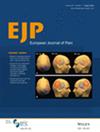Reference Values of Joint-Specific Pressure Pain Thresholds in Healthy Male Individuals: A Retrospective Study
Abstract
Background
Pressure pain thresholds (PPT) are a component of Quantitative Sensory Testing and are used to assess mechanical pain sensitivity. Joint-specific PPT measurements are relevant because many joint disorders involve altered pain processing at and around joints. This study aims to establish such reference values that might contribute to evaluate deviations in pain sensitivity in specific patient populations.
Methods
This study retrospectively analysed PPT data from 407 healthy male individuals. Pressure was applied in a standardised manner using an algometer at eight anatomical landmarks: bilaterally at the elbow, knee and ankle joints, as well as the sternum and forehead. Percentile-based, landmark-discriminative normative data were calculated for PPT in general and segmented for age, BMI and mean subjective pain over 4 weeks.
Results
Median (IQR) PPT values (N/cm2) for anatomical landmarks are as follows: ankle = 47.2 (35.9, 63.8), knee = 65.9 (48.6, 89.1), elbow = 58.0 (40.5, 81.1), sternum = 39.8 (30.2, 53.3) and forehead = 35.5 (26.8, 45.0). Between-group analyses revealed no significant effect of BMI on PPT at any landmark assessed, no significant effect of age, except for the elbow joint (p = 0.035) and no effect of the presence of pain, except for the ankle (p = 0.020) and elbow joint (p = 0.010).
Conclusion
This study provides normative joint-specific PPT values in healthy male individuals, offering reference values for both clinical and research applications. These values can assist in interpreting PPT measured in clinical settings and in identifying abnormal pain sensitivity.
Significance Statement
Pressure pain thresholds are an important measure in Quantitative Sensory Testing, yet comprehensive normative data for joint-specific PPT in healthy individuals have been lacking. This study establishes reference values across multiple anatomical landmarks, providing a critical benchmark for evaluating pain sensitivity deviations in musculoskeletal disorders. These findings enhance the interpretation of PPT measurements, supporting improved pain assessment and diagnostic accuracy.


 求助内容:
求助内容: 应助结果提醒方式:
应助结果提醒方式:


